- Supplements
- Fat Burners
- Pre Workout Booster
- Testo Booster
- Ephedrine HCL
- ECA stack
- Yohimbine
- Prohormones
- SARMs
- Power
- Muscle
- Accessories
- Fat loss
- Diet
- Health
- Endurance
-
Cart
-
50€+ Order = Free Shipping
*AT & DE
Manufacturers
BESTSELLER
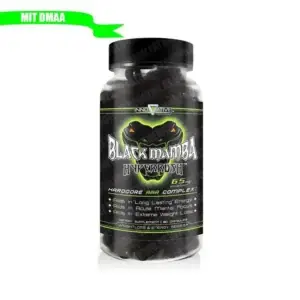
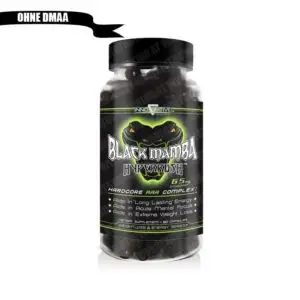





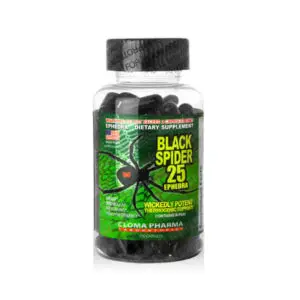
About
FATBURNERKING


For centuries, people have sworn by the healing powers of plants. Echinacea, also known as coneflower, is one of those plants that is widely recognized in medical circles.
Echinacea, known in German as Sonnenhut, is an ancient medicinal plant that is mainly used to prevent and treat viral infections of the upper respiratory tract, especially colds. There are different species such as the red coneflower (Echinacea purpurea) and the pale coneflower (Echinacea pallida), which are valued for their health-promoting properties.
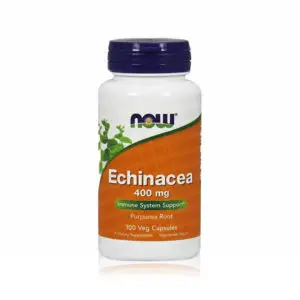
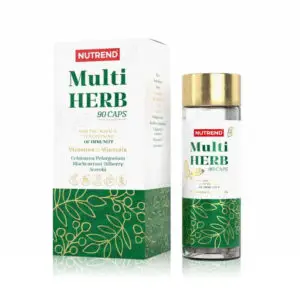

The red coneflower is originally native to the dry prairie regions of North America, but has also proven to be robust in Europe.
Echinacea, also known as coneflower, comprises several species and varieties that are widely used in medicinal medicine. The genus name was first published by Conrad Moench in 1794. The original plant classification according to Arthur John Cronquist comprises four species, three of which are mainly used medicinally:
These species are perennial herbaceous plants and are known for their immunomodulatory properties. The ingredients include alkamides, caffeic acid derivatives, polyacetylenes and antioxidants such as flavonoids. Scientific studies have shown that echinacea can have a regulating, preventive and defense-boosting effect on the immune system.
In natural medicine, echinacea is used to support the upper respiratory tract and to treat flu-like and chronic recurring infections. However, caution should be exercised when taking it specifically, as it can also cause allergic reactions.
| Echinacea species | German name | Main effect |
| Echinacea purpurea | Red coneflower | Immunomodulation |
| Echinacea angustifolia | Narrow-leaved coneflower | Preventive effect |
| Echinacea pallida | Pale coneflower | Anti-inflammatory effect |
All in all, echinacea remains a valuable ancient medicinal plant with a wide range of applications.
Echinacea, known by the German name Sonnenhut, is an ancient medicinal plant with an impressive range of biologically active substances. The main ingredients include caffeic acid derivatives, polyacetylenes, alkamides and flavonoids. These components contribute to the many health-promoting effects of the plant.
| Substance group | Properties |
| Caffeic acid derivatives | Known for antioxidant effects |
| Polyacetylenes | Have an antimicrobial effect |
| Alkamides | Structurally similar to endocannabinoids; high bioavailability; known for immunomodulatory and anti-inflammatory effects |
| Flavonoids | Antioxidants that combat oxidative stress |
The alkamides in Echinacea, as known from scientific studies, play a key role in the immunomodulating and anti-inflammatory effects of the plant. In addition to Echinacea purpurea, E. pallida and E. angustifolia are also used medicinally and share a similar spectrum of ingredients.
Thanks to these ingredients, the targeted intake of echinacea could have a preventive effect on health, particularly in the case of flu-like infections and chronic recurrent upper respiratory tract infections.
Echinacea, also known as red coneflower, is an ancient medicinal plant that is valued for its health-promoting properties. It has a significant immune-boosting effect, which is achieved by increasing the white blood cells.
These benefits have been confirmed in scientific studies and it is worth considering targeted use for chronic, recurring infections. Regular use can not only strengthen the immune system, but also support the body's healing processes.
Echinacea, also known as red coneflower, has been valued for centuries as one of the most popular immune-boosting medicinal plants. Scientific research, both in the laboratory and in human studies, has proven its positive influence on the immune system. In particular, bioactive substances such as alkylamides may be responsible for the immunomodulating properties of echinacea. These substances contribute to a significant increase in the number of immune-boosting white blood cells. Echinacea appears to be able to effectively fight viruses, fungi and bacteria while providing anti-inflammatory effects. Despite its benefits, however, people with autoimmune diseases or immune deficiencies are generally advised against using echinacea, as the effect on their immune system is unclear.
Echinacea shows promising results in the fight against colds and flu. Preparations of this medicinal plant can shorten the duration of colds and are effective in preventing them. The active plant substances contained in Echinacea have antioxidant and anti-inflammatory properties that can help to alleviate cold symptoms. Echinacea purpurea, a specific species of the plant, is used therapeutically to support chronic recurrent upper respiratory tract infections such as colds, rhinitis and sore throats. The use of echinacea is particularly recommended during the cold season, as it can alleviate the typical symptoms of a cold and speed up their resolution.



In view of the global pandemic, the possible use of echinacea for COVID-19 is being discussed. Due to its immunomodulatory properties, echinacea could potentially have a positive effect in corona disease. However, there are currently no conclusive clinical results on the therapeutic efficacy of echinacea in COVID-19 or the dreaded cytokine storm. Nevertheless, existing research suggests that the influence of echinacea on cytokine levels may warrant further investigation. Despite the uncertainty about the direct effect on COVID-19, echinacea is being considered for preventive applications, especially during the cold season. Further clinical studies are needed to fully clarify the potential effects of echinacea on this disease.
Echinacea, known by the German name Sonnenhut, is an ancient medicinal plant with multiple health benefits. In addition to its well-known immunomodulating properties, current research shows that echinacea could also have potentially positive effects on mental health.
Although these results are promising, further scientific studies are needed to be able to make well-founded statements about the psychological benefits of echinacea. The anti-inflammatory effect and the immune-boosting effect make it worth considering, especially for flu-like infections or chronic recurring infections.
A targeted intake of echinacea could therefore not only strengthen the immune system, but also the psyche, making it a holistic approach to health.
Echinacea, known by the German names red coneflower, pale coneflower and narrow-leaved coneflower, is a popular ancient medicinal plant. Nevertheless, some side effects can occur when taking it. As a rule, echinacea is well tolerated, but in rare cases it can cause digestive problems, headaches and dizziness.
One of the most important precautions concerns allergic reactions. People who are sensitive to composite plants should avoid Echinacea. Severe allergic reactions can occur in these people. In general, allergic reactions can also cause rashes and stomach problems.
In addition, echinacea can interact with substances such as cytochrome P450-metabolizing substances and possibly increase their effect. It follows that people taking such drugs should discuss the use of echinacea with their doctor.
An overview of possible side effects:
It is important to be aware of these side effects when considering the targeted use of echinacea to support the upper respiratory tract or to prevent infections.
Echinacea, known as red coneflower or pale coneflower, is an ancient medicinal plant with many uses. It is mainly used to strengthen the immune system, especially during the cold season. The plant contains valuable active ingredients such as caffeic acid derivatives and antioxidants, which contribute to its immunomodulating effect.
Outlook for the future: Current studies are investigating the potentially positive effects on corona diseases. Echinacea remains an exciting topic for research, particularly due to its anti-inflammatory and immunomodulatory properties.
© copyright 2018-2025 Fatburnerking.at
| Cookie | Duration | Description |
|---|---|---|
| cookielawinfo-checkbox-advertisement | 1 year | This cookie is set by the GDPR Cookie Consent Plugin and is used to record the user's consent for the cookies in the "Advertising" category. |
| cookielawinfo-checkbox-analytics | 11 months | This cookie is set by GDPR Cookie. The cookie is used to store user consent for cookies in the "Analytics" category. |
| cookielawinfo-checkbox-functional | 11 months | The cookie is set based on the consent of the GDPR cookies to record the user's consent for cookies in the "Functional" category. |
| cookielawinfo-checkbox-necessary | 11 months | This cookie is set by GDPR Cookie. Cookies are used to store the user's consent to the storage of cookies in the "Necessary" category. |
| cookielawinfo-checkbox-others | 11 months | This cookie is set by GDPR Cookie. The cookie is used to store the user's consent for cookies in the "Other" category. |
| cookielawinfo-checkbox-performance | 11 months | This cookie is set by GDPR Cookie. The cookie is used to store user consent for cookies in the "Performance" category. |
| CookieLawInfoConsent | 1 year | Records the default button status of the corresponding category and the status of CCPA. It only works in coordination with the primary cookie. |
| elementor | never | This cookie is used by the website's WordPress theme. It allows the website owner to implement or change the content of the website in real time. |
| viewed_cookie_policy | 11 months | The cookie is set by the GDPR cookie and is used to store whether the user has consented to the use of cookies or not. It does not store any personal data. |
| Cookie | Duration | Description |
|---|---|---|
| ssupp.vid | 6 months | Cookie set by Smartsupp to record the visitor ID. |
| ssupp.visits | 6 months | Cookie set by Smartsupp to record the number of previous visits, necessary to track automatic messages. |
| Cookie | Duration | Description |
|---|---|---|
| _ga | 2 years | The _ga cookie installed by Google Analytics calculates visitor, session and campaign data and also tracks website usage for the website analytics report. The cookie stores information anonymously and assigns a randomly generated number to identify unique visitors. |
| _gat_gtag_UA_179465762_1 | 1 minute | Set by Google to distinguish users. |
| _gid | 1 day | The _gid cookie installed by Google Analytics stores information about how visitors use a website and at the same time creates an analytics report about the website's performance. Some of the data collected includes the number of visitors, their source and the pages they visit anonymously. |
| tk_ai | 5 years | JetPack sets this cookie to store a randomly generated anonymous ID that is only used in the administration area and for general analytics tracking. |
| tk_lr | 1 year | The tk_lr is a referral cookie set by the JetPack plug-in on websites using WooCommerce that analyses referral behaviour for Jetpack. |
| tk_or | 5 years | The tk_or is a referral cookie set by the JetPack plug-in on websites using WooCommerce that analyses referral behaviour for Jetpack. |
| tk_qs | 30 minutes | JetPack sets this cookie to store a randomly generated anonymous ID that is only used in the administration area and for general analytics tracking. |
| tk_r3d | 3 days | JetPack installs this cookie to collect internal metrics for user activity to improve the user experience. |
| tk_tc | Session | JetPack sets this cookie to record details of how users use the website. |
| Cookie | Duration | Description |
|---|---|---|
| _fbp | 3 months | This cookie is set by Facebook to display ads after visiting the website, either on Facebook or on a digital platform powered by Facebook Ads. |
| fr | 3 months | Facebook sets this cookie to display relevant ads to users by tracking user behaviour on the web, on websites with Facebook Pixel or Facebook Social Plug-in. |
| Cookie | Duration | Description |
|---|---|---|
| cookies.js | Session | No description available. |
| weglot_wp_rocket_cache | Session | No description |